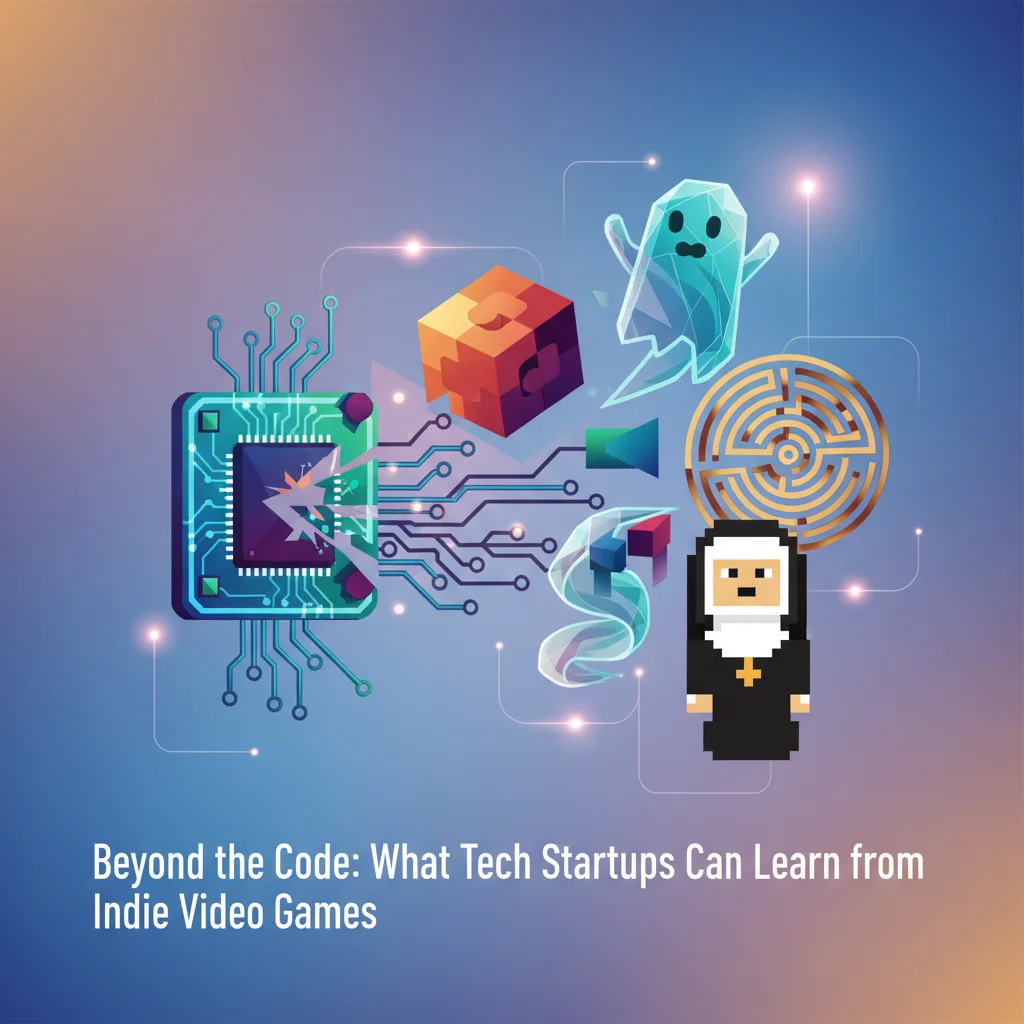
Beyond the Code: What Tech Startups Can Learn from Indie Video Games
What do a surreal puzzle box, a haunted ghost, a pixelated nun, and a cryptic labyrinth have in common? On the surface, they’re the stars of four brilliant new indie video games. But if you look a little closer, they represent something much more profound: a masterclass in the kind of lean, disruptive innovation that every tech professional, entrepreneur, and developer strives for.
The world of indie game development is a microcosm of the startup ecosystem. It’s a high-stakes environment where small, agile teams leverage powerful software and creative genius to compete with industry giants. They are the quintessential tech startups, bootstrapping their way from a concept to a complex, interactive product. Forget the latest SaaS conference for a moment; the most valuable lessons in product development, user engagement, and creative problem-solving might just be hiding on your Steam wishlist.
Let’s dive into four recent releases and unpack the powerful tech and business lessons they hold for all of us.
The Indie Studio: A Blueprint for Modern Startups
Before we look at the games, it’s crucial to understand the context. An indie studio operates on the same principles as a fledgling tech company. They often start with a small team, limited funding, and a massive vision. Their success hinges on a few key factors that are universally applicable:
- Agile Development: Indie teams must be incredibly efficient. They use powerful game engines like Unity and Unreal—platforms that have democratized game development—to iterate quickly, test ideas, and pivot without the bureaucratic drag of a large corporation.
- Unique Value Proposition: They can’t compete on budget, so they compete on creativity. Their goal is to create an experience so unique that it carves out its own niche, attracting a dedicated audience.
- Leveraging Platforms: Distribution platforms like Steam or the Epic Games Store function as a global-scale SaaS marketplace. These platforms handle payment processing, delivery, and updates, allowing small studios to focus on their core competency: building great software.
With that framework in mind, let’s explore how these principles manifest in practice.
Case Study 1: Animal Well – The Architecture of Intrigue
At first glance, Animal Well looks like a retro “Metroidvania”—a 2D exploration game filled with secrets. But it’s the game’s construction that offers a lesson in sophisticated software architecture. Developed almost entirely by one person, Billy Basso, the game is a dense, interconnected world where every element feels deliberate. There are no traditional “upgrades”; progress is made by understanding the intricate systems and using the environment in clever ways.
For developers and engineers, this is a beautiful metaphor for elegant system design. The world of Animal Well is like a well-designed microservices architecture—each part is distinct yet communicates seamlessly with the whole. The programming challenge here isn’t just making a character jump; it’s creating a complex web of logical dependencies that feels both natural and challenging to the user. Furthermore, the game’s many layers of secrets, some requiring community collaboration to solve, highlight the power of building products that foster engagement beyond the initial user experience.
Case Study 2: Indika – Narrative as a Disruptive Technology
Perhaps the most daring of the bunch, Indika tells the story of a young nun in 19th-century Russia who is accompanied by the devil himself. This serious, cinematic narrative is jarringly interrupted by retro, 8-bit pixel-art minigames. It’s a bizarre and brilliant choice that shouldn’t work, but it does.
This is where we can see a parallel to the future of interactive storytelling, potentially powered by Artificial Intelligence. The game’s narrative is fixed, but its emotional impact comes from the sharp contrast in mechanics. Imagine a future version of this concept where a generative AI engine alters the minigames or even parts of the main narrative based on player choices, creating a truly personalized psychological journey. The game’s developer, Odd Meter, worked in exile from Russia, making its creation an incredible story of a remote-first startup overcoming immense obstacles. Their use of contrasting game styles is a lesson in fearless


